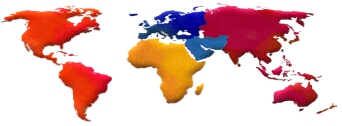 | |||
 |
KUMRU KİMYA
SANAYİ VE TİCARET LTD.ŞTİ. | ||

|
|
Kumru Kimya whose main purpose is customer satisfaction was established in 1972 and since that time it has been trading plastic raw materials. In this direction, it is trading with the most important petrochemistry manufacturers in all over the world particularly Europe, Far East and Asia. Kumru Kimya exports mainly Urea formaldehyde, melamine-formaldehyde and phenol-formaldehyde (Bakelite) moulding powder, glazing powder (lamalit), polyethylene (PE), polypropylene (PP), polyvinyl chloride (PVC), polystyrene (PS) and ABS raw materials.
Because the chemical structure of thermoset plastics is completely different from the structure of thermoplastics, there are also some differences in their production processes. Whichever method is used, the processing of thermoplastics is as follows: plastic becomes fluid through pressure and heat, this liquid plastic gets the shape of the mould, the mould is cooled and finally the final product is get. In thermoset plastics, again through heat and pressure the plastic becomes liquid and then gets the shape of the mould. However, in the final stage of the production process thermoset plastics become solid by “being burned” instead of becoming solid by cooling.
This difference in the production process of thermoset plastics doesn’t pose an obstacle for their processing with plastic injection and compression moulding methods which are one of the most popular methods. You can find the most important points with regard to these two methods.
Compression Moulding
Compression moulding is a very old and common production method used for the processing of thermoset plastics. With this method, plastic raw material turned into the final product form by being compressed through heat and pressure. This method is performed with a press containing heated board or heated mould. In this method, two piece moulds are used.
In compression moulding method, the mould is heated before the moulding in order to shorten the burning time. Raw material which is put on the mould by being weighted is compressed with the press heated beforehand. Raw material which melts with heat and pressure fills the blanks in the mould. After waiting for certain time the press is opened and the plastic which has reached its final form is taken from the mould.
Although preheating, mould heating degrees and mould pressure change according to plastic raw material type that will be used, preheating in thermoset plastics is averagely 93C, mould temperature is 120C-200C and mould pressure is 7psi-14psi.
Another important issue is that extra plastic raw material should be poured into the mould. This is important because by doing this mould fills up completely. This extra material is formed around the final product as burr. This burr can be easily removed from the final product.
Thermoset gases need to be taken into consideration in compression moulding. These gases which generally occur in urea formaldehyde and melamine formaldehyde mouldings should be taken out. Otherwise, raw material can weaken and on the surface some stains can occur.
Advantages and disadvantages of compression moulding method are given below.
|
Advantages |
Disadvantages |
|
· The cost of the tools is low because of the simplicity of the moulds used |
· If the raw material isn’t heated small parts of the machine can be damages |
|
· Raw material casualty is low because there is no nozzle |
· Complex figures cannot take shape easily |
|
· In contrast to thermoplastics, thermosets aren’t subject to internal tension |
· Thick particles burn slower |
|
· Less locking pressure is needed gereklidir |
· During the production, burr occurs |
|
· The cost of main machine is lower |
|
|
· Mould requires less maintenance |
|
Injection Moulding
The second method used in the processing of thermoset plastics is injection moulding method which is also used in thermoplastics. Injection moulding method is performed by making small changes in the machine. The reason is that thermoset plastics have different burning features.
In the processing of thermoset plastics with injection moulding method, heat control is much more important. In this method, thermoset plastic granules are carefully heated in machine’s reservoir. However, this heating process is performed in such a way that raw material softens but the cross-linking shouldn’t occur until the raw material enters the mould hole. On the other hand, the mould should be heated with higher temperatures so that the cross-linking occurs and thus the mould raw material burns and becomes final product as soon as possible.
Approximate values of parameters to be used while thermoset plastics are moulded in injection machines are given below.
Melting temperature: 110 - 140C
Piston temperature: 65C - 90C
Nozzle temperature: 85C - 120C
Mould temperature: 165C - 195C
Injection pressure: 85MPA – 250MPA
Screw pressure: <7 MPA
Screw speed: 65 – 85 rev/min
Burning time: 15sec – 80sec